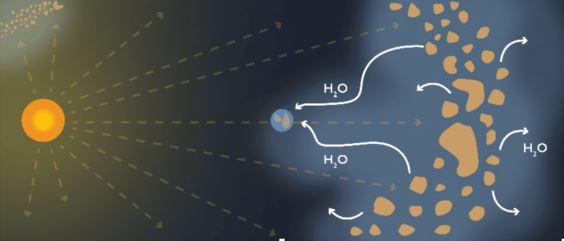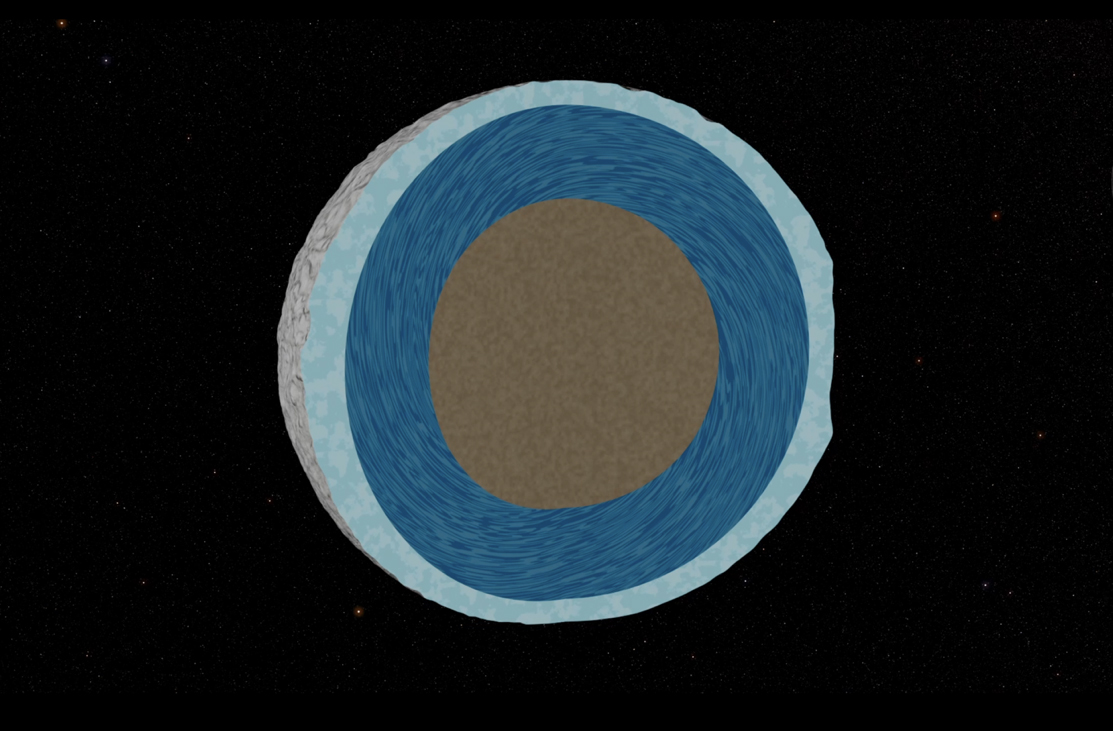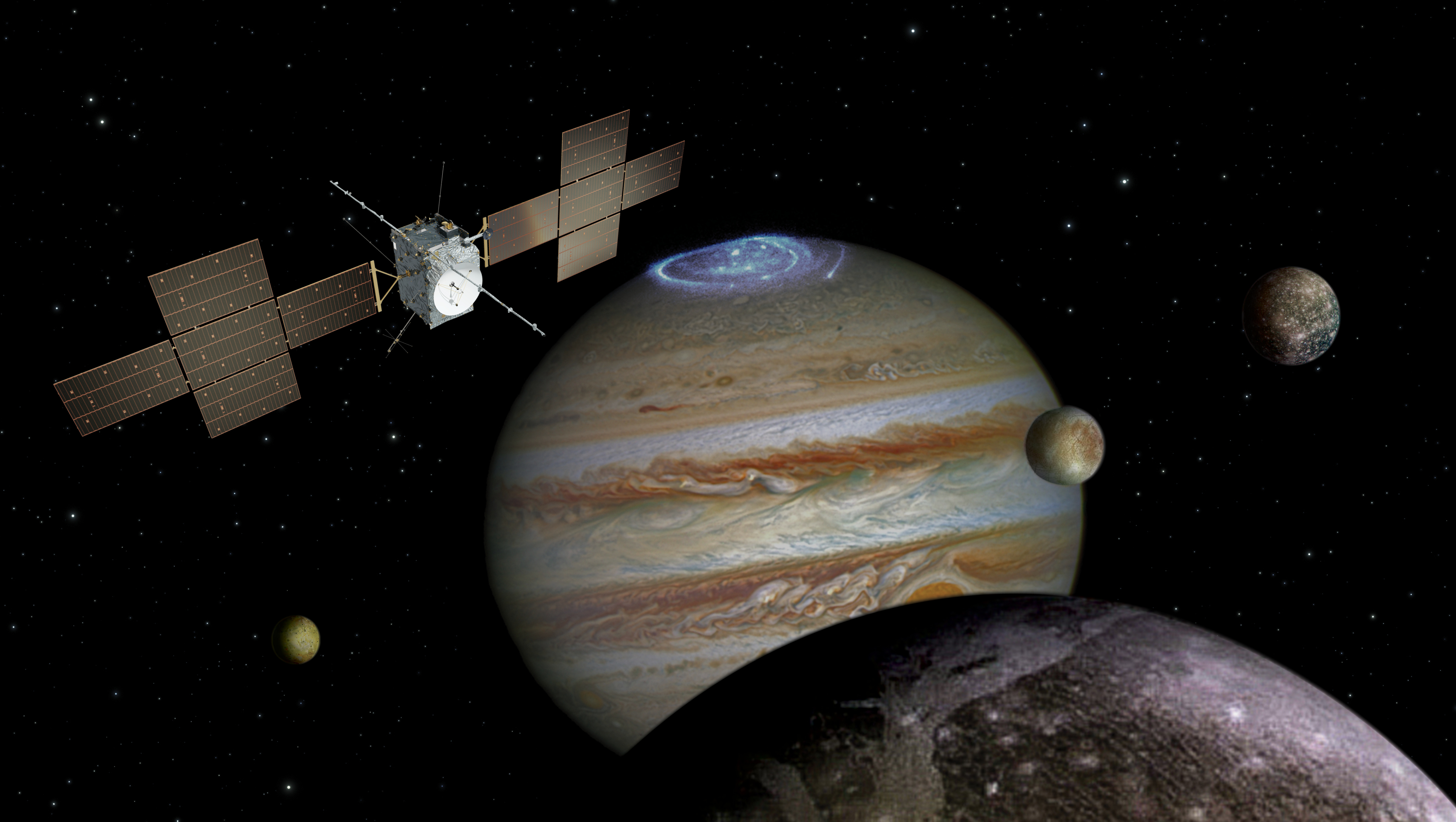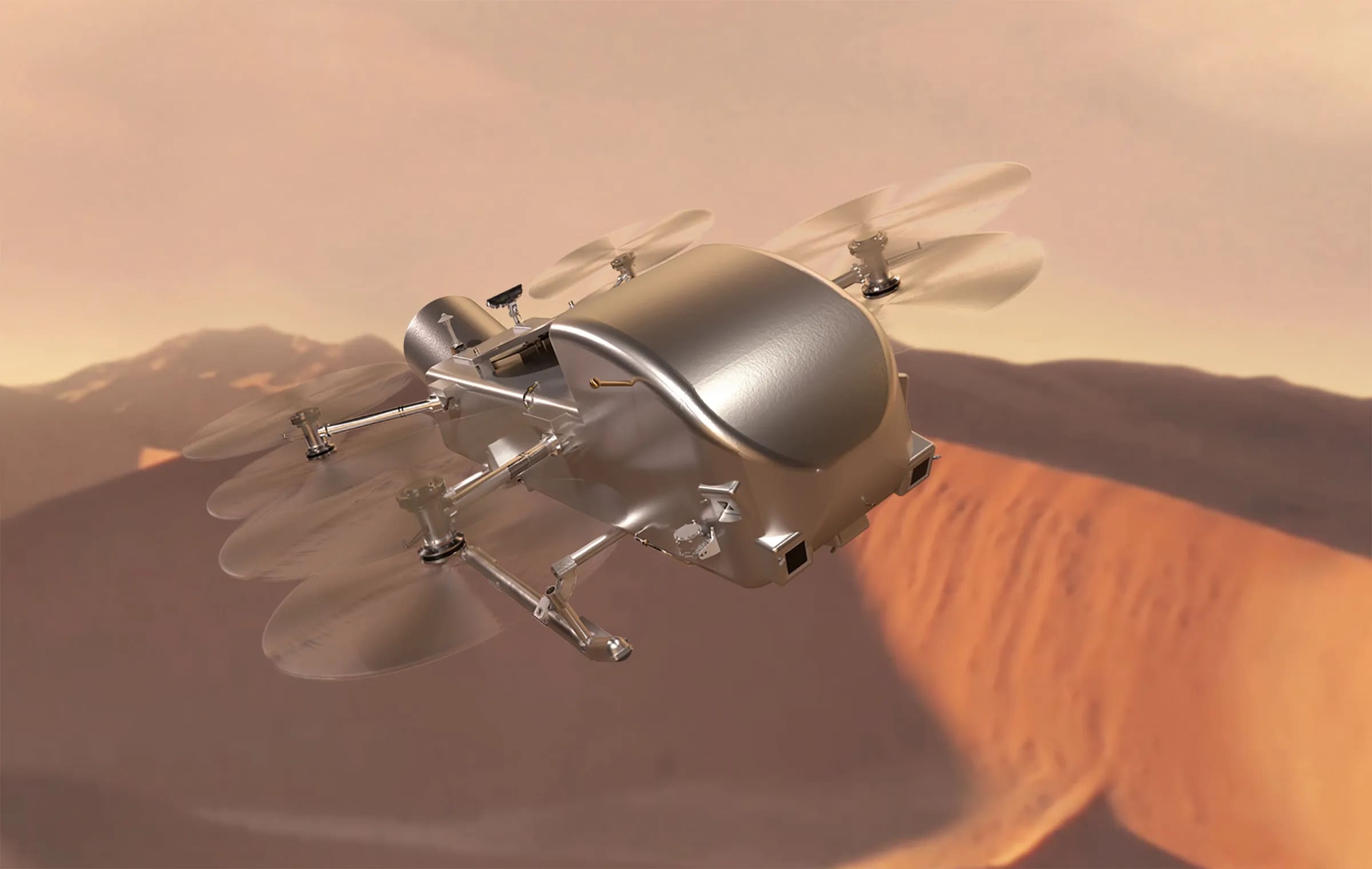Where does the Earth’s water come from ? A fascinating new theory
Water is essential for life, but how did it get here ? Conventional theories suggest that icy comets or asteroids brought this precious resource during ancient impacts. However, a study led by Quentin Kral, astronomer at LIRA (Observatoire de Paris - PSL), and published in Astronomy & Astrophysics, proposes a revolutionary alternative.
According to this hypothesis, the water was released by asteroids formed in a cold primordial disk. Warmed by the Sun, these celestial bodies would have released their ice in the form of water vapour, forming an immense vapour disk surrounding the asteroid belt. Gradually, this vapour would have diffused towards the inner Solar System, enabling young planets, including Earth, to capture some of this water to shape their oceans.
This model, more robust and applicable to other planetary systems, could revolutionize the way we search for exoplanets capable of harboring life !
To find out more : A new theory to explain the origin of water on Earth

A hidden ocean on Mimas : a surprise from Saturn’s moons
If water is abundant on Earth, it’s also present elsewhere in the Solar System... sometimes where we least expect it ! Mimas, a small, crater-ridden moon of Saturn, seemed to be a dry, frozen world. However, a study led by Valéry Lainey, astronomer at the Laboratoire Temps Espace (Paris Observatory - PSL) and published in Nature, has just revealed an incredible secret : beneath its thick layer of ice, Mimas is home to a global ocean of liquid water.
Using data from the Cassini probe, researchers have analyzed the moon’s oscillations (known as librations) and demonstrated that beneath an ice crust 20-30 km thick, an ocean does indeed exist. What’s even more surprising is that this ocean is very young, only 5 to 15 million years old ! Its recent formation, caused by gravitational interaction with Saturn and its other moons, makes it an ideal laboratory for studying the emergence of conditions favorable to life.
To find out more : Presence of a “young” ocean under the Mimas ice sheet

Water, a key to understanding the Universe
These discoveries confirm that water is a universal resource, shaping the history of both Earth and other worlds. From water vapor scattered across primordial space to oceans hidden beneath the ice of Saturn’s moons, water seems ubiquitous and could be an essential element in the search for life elsewhere.
The conditions necessary for a world to be “habitable” and allow the emergence of life, based on what we know of life on Earth, include the presence of liquid water, essential elements (the famous CHNOPS) and energy sources. It is precisely these conditions that space exploration missions have been seeking to identify for over 60 years. Mars was the first target, with over 50 spacecraft sent to date. In the near future, the aim will be to bring back samples, either from the planet’s surface, or from the surface of its satellite Phobos, via the Japanese Martian Moons eXplorer (MMX) mission, in which Observatory researchers are participating. The idea is to obtain information on the past presence of water, which would have flowed in abundance on the Red Planet.

Further out in the solar system, still in search of liquid water and possible habitats beyond the “ice line”, ESA’s Juice and NASA’s recently launched Europa Clipper missions will focus on studying Jupiter’s moons, notably Ganymede, Europa and Callisto. Their aim will be to reveal the characteristics of the oceans hidden beneath their surfaces, and to explore other conditions necessary for life, such as organic elements and energy sources. It’s worth noting that the satellites of gas giant planets have between 2 and 10 times more water in their subsurface oceans than the Earth ! Juice was a mission marked by a major French contribution, with Athéna Coustenis from LIRA as co-lead scientist right from the mission design phase.
To find out more : JUICE : Contributions from Paris Observatory - PSL

Later, in 2028, the Dragonfly mission, in which many Observatory researchers are also taking part, will succeed the Huygens probe in further exploring the mysteries of Titan, a large moon in the Saturn system. Like Mimas, Titan could conceal an ocean of liquid water beneath its surface, while possessing prebiotic organic chemistry and, perhaps, signs of cryovolcanism.
To find out more : Dragonfly mission confirmed by NASA
With the progress of astronomical observations and future space missions, researchers at Paris Observatory - PSL will continue to probe these mysteries to better understand the history of water in the Universe... and perhaps that of life.
